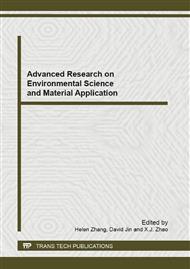[1]
Information on http: /www. stats. gov. cn.
Google Scholar
[2]
Information on http: /www. caam. org. cn.
Google Scholar
[3]
Information on http: /www. cnogc. org/a/news/2012/0328/61. html.
Google Scholar
[4]
RONG Yingfei, Study on Combustion characteristics of Butanol, Master Dissertation of Qingdao University, 2010. 5.
Google Scholar
[5]
Yang Jing,Li Ke,Yang Xiaolong,Liu Jingping, Zhong Zhihua in: A Study on the Heat Release Law of Butanol—Gasoline Blends in Combustion, Automotive Engineering, 2009(VoL 31)No. 10.
Google Scholar
[6]
YANG Xiaolong, Yang Jing, Lin Tieping, The Effect of an SI Engine using Butanol–Gasoline Blended Fuel on Performance and Environment. 2009, International Conference on Energy and Environment Technology: 402-405.
DOI: 10.1109/iceet.2009.104
Google Scholar
[7]
J. Serras-Pereira and P. G. Aleiferis,D. Richardson and S. Wallace,Characteristics of Ethanol, Butanol, Iso-Octane and Gasoline Sprays and Combustion from a Multi-Hole Injector in a DISI Engine, 2008-01-1591:894-909.
DOI: 10.4271/2008-01-1591
Google Scholar
[8]
Thomas Wallner. Scott A. Miers. Steve McConnell,A Comparison of Ethanol and Butanol as Oxygenates Using a Direct-Injection, Spark-Ignition Engine. Journal of Engineering for Gas Turbines and Power, 2009, 032802: 1-9.
DOI: 10.1115/1.3043810
Google Scholar
[9]
Yang Xiao long, Yang Jing,Lin Tie—ping in: Experimental Study of the Effects of Butanol—gasoline Blend on Engine Performance [J], Journal of Hunan University(Natural Sciences), V01. 37,No. 2, Feb. (2010).
Google Scholar
[10]
Benjamin Wigg, Robert Coverdill, Chia-Fon Lee and Dimitrios Kyritsis, Emissions Characteristics of Neat Butanol Fuel Using a Port Fuel-Injected, Spark-Ignition Engine, SAE, 2011-01-0902.
DOI: 10.4271/2011-01-0902
Google Scholar
[11]
Kenneth R. Szulczyk, Which is a better transportation fuel – butanol or ethanol? , 2010 International Energy & Environment Foundation, Volume 1, Issue 3, 2010, pp.501-512.
Google Scholar
[12]
DU qing, YANG yanxiang, ZHENG wei, DING ning, CAI xiaolin, JIN zhongguo in: The Study of Vehicle Emission Properties on Real-Road Condition and the Influence of Some Important Factors, Tran saction s of CSICE, Vo l. 20 (2002)No. 4.
Google Scholar
[13]
YAO Zhiliang, SHEN Xianbao, ZHANG Yingzhi, WANG Qidon in: On-road Emission Characteristics of Gaseous Pollutants from Low-speed Vehicles [J], 2010, 37(2): 32-35.
Google Scholar
[14]
CHEN Xiaohong in: Research on Classification System of Urban Roads in Shanghai [J], 2011, (25): 65-70. DOI: 10. 3981/j. issn. 1000-7857. 2011. 25. 010.
Google Scholar


